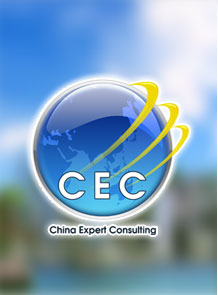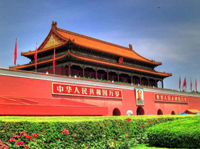China infosHistory, government & economy of China
Government: Constitution 1982, changed in 2004, Peoples Republic. Highest representation is the Chinese parliament which holds meetings annually (National Peoples Congress) with 2,972 members who are chosen every 5 years by the parliaments of the provinces, autonomic regions and cities as well as by the Peoples Liberation Army (267 members). The standing committee of the National People’s Congress has 154 members (134 members, the President, 18 Vice Presidents and the General Secretary which rules over the different branches. Chairman of the branch of the National Peoples Congress is Wu Bangguo, since 15.03.2003 – Top Leaders: Leaders of the Politburo of the Communist Party of China with the General Secretary of the Party: (Hu Jintao, since 15.11.2002) and additional 8 members: Wu Banguo, Wen Jiabao, Jia Qinglin, Zen Qinghong, Huang Ju, Wu Guanzheng, Li Changchun, Luo Gan, 24 members of the Politburo (Standing Committee + 13 full members and 2 candidates) as well as the Secretary Office with 7 members, Central Committee (189 full members and 130 candidates); Central Military Committee (9 members, Chairman Hu Jintao, since 2005), Election of the Head of State at the age of 18. Administration:23 provinces, (including Taiwan, which is seen as the 23rd province), 5 autonomic regions, 4 city parts, 147 units with regional autonomy. Head of State: Hu Jintao, since
15.03.2003, Vice President: Zeng Qinghong Economy: Currency: 1 Renminbi ¥uan
(RMB.¥) = 10 Jiao; 1 US-$ = 8,02 RMB.¥; 1 € = 10.38
RMB.¥ China history:China is one of the oldest civilizations in the world. The first dynasties were the Xia (2205-1766 BC) and Shang (until 1050 BC). In 7th century BC China was separated into a lot of small states. Some of them set up a cooperation called the “Group of the Zhong-Guo” (Middle land country). In 249 BC King Zheng of the Qin Dynasty defeated the other small states and gave himself the title Huangdi and Qin Shi Huangdi. To set up a defence line against the Mongols he set up the 2450-km-long Great Wall Of China. In the 13th century, however, the Mongols defeated China. As Marco Polo reached China in 1279 China was occupied by the Mongols lead By the Chinese Emperor Kublai Khan. The rule of the Mongols was terminated by rebellion in 1368. The Buddhist monk Zhu Yuanzhang entered the throne as Emperor Taizu and launched the Ming-Dynasty (until 1644). The Chinese capital was changed to Beijing in 1421. During the Qing Dynasty (until 1912) China developed well economically and politically. In 1839 the Opium War broke out which was won by the British Empire. The British government forced the Chinese to open their market for free trade with Europeans. In 1899 the rebellion of the Boxer took place to throw foreigners out of China. In 1908 the last Chinese Emperor Pu-Yi, aged 2, took to the throne. He left power in 1912 as the Republic of China was established. In 1921 the Communist Party was established. In 1928 the Communist Party leader chairman Mao Zedong reorganised the party. At the same time Chiang Kai-Shek ruled the national Kuomingtang Party. In 1937 the Japanese-Chinese War broke out which ended in 1945 with the capitulation of Japan. In 1949 the People’s Republic of China was established by Mao Zedong. Chiang Kai-Shek escaped to the Chinese province Taiwan. After Mao died in 1976 the Great Leader Deng Xiaoping started to reform trade and the economy with great success. In the 1990s China signed a lot of trade contracts, especially with Germany and the USA. Due to the Asian crisis, social unrest due to privatization of lots of State-owned companies and the large flood of the Yangtze River the Chinese economy was slowed down by the government in 1999. However, the former leader Zhu Rongji continued the way to open China up to foreign trade and helped China enter the World Trade Organization in 2001. |

